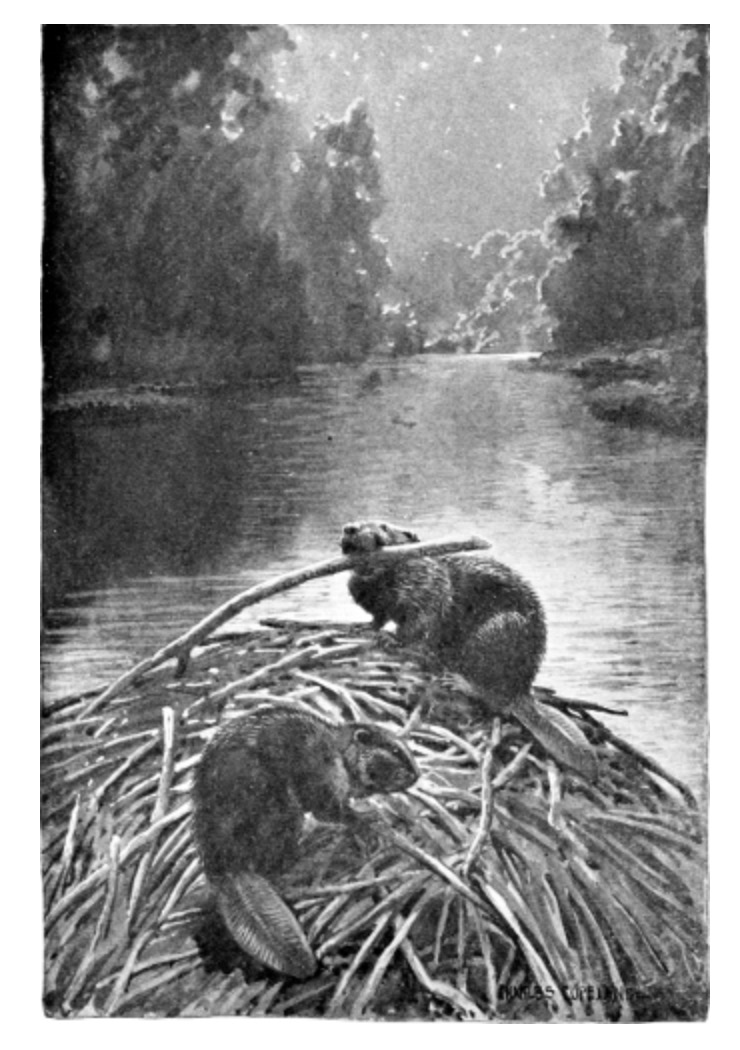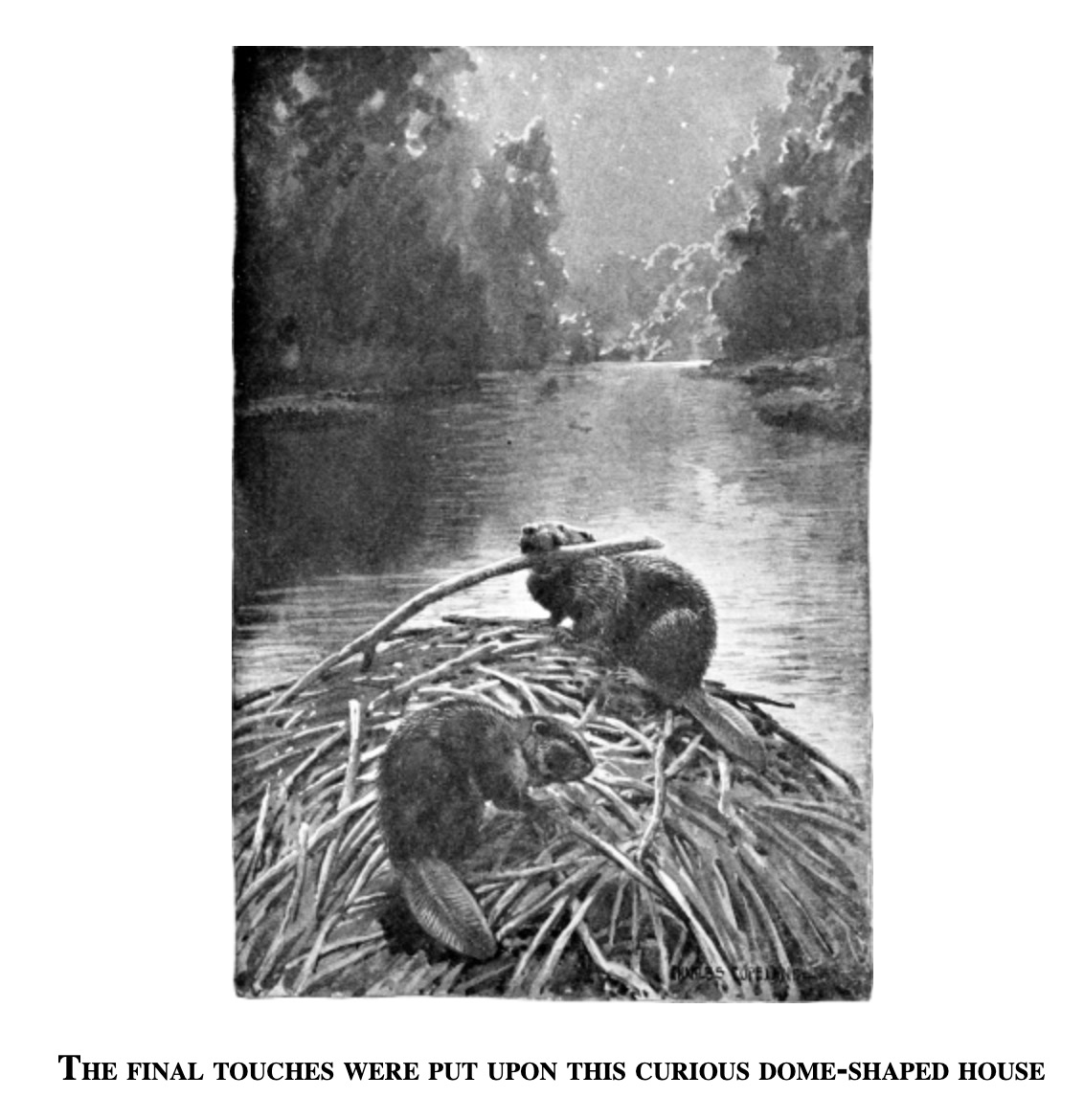Shaggy Coat

One in a series of posts dedicated to pop-culture depictions of beavers — as symbolic representations of Americans — from 1904–2003. The series derives its title from Thomas Carlyle’s warning about merely instinctive labor.

Shaggycoat: The Biography of a Beaver is a 1906 book by Clarence Hawkes, a naturalist and prolific Massachusetts author known as the “blind poet of Hadley.” It’s interesting to find Hawkes commenting on the phrase “busy as a beaver” here:
The phrase “as busy as a beaver” was anything but descriptive of their life now, for they did little but sleep and eat bark. They had provided well for these cold months, and now they had nothing to do but enjoy themselves. I am inclined to think that the maxim about working like a beaver only applies to two or three months in the autumn, for the rest of the year the beaver is a very lazy fellow.
Sounds as though Hawkes is a dissenting voice in the twentieth century’s moralistic busy-beaver discourse… but, later in the story Shaggycoat turns against a “bank beaver” (i.e., one living in a burrow apart from the colony) who doesn’t want to help build a dam: “Shaggycoat did not like this lazy manner of living, besides he did not think it safe. When day after day Brownie refused to help on the dam, he flew into a rage with so lazy a fellow, and gave Brownie such a severe trouncing that he never dared show himself about the lake afterward.”

I should also note the similarity between this book and Watership Down, both of which began with men destroying a creature’s habitat… and end with the establishment of a utopian new colony.

